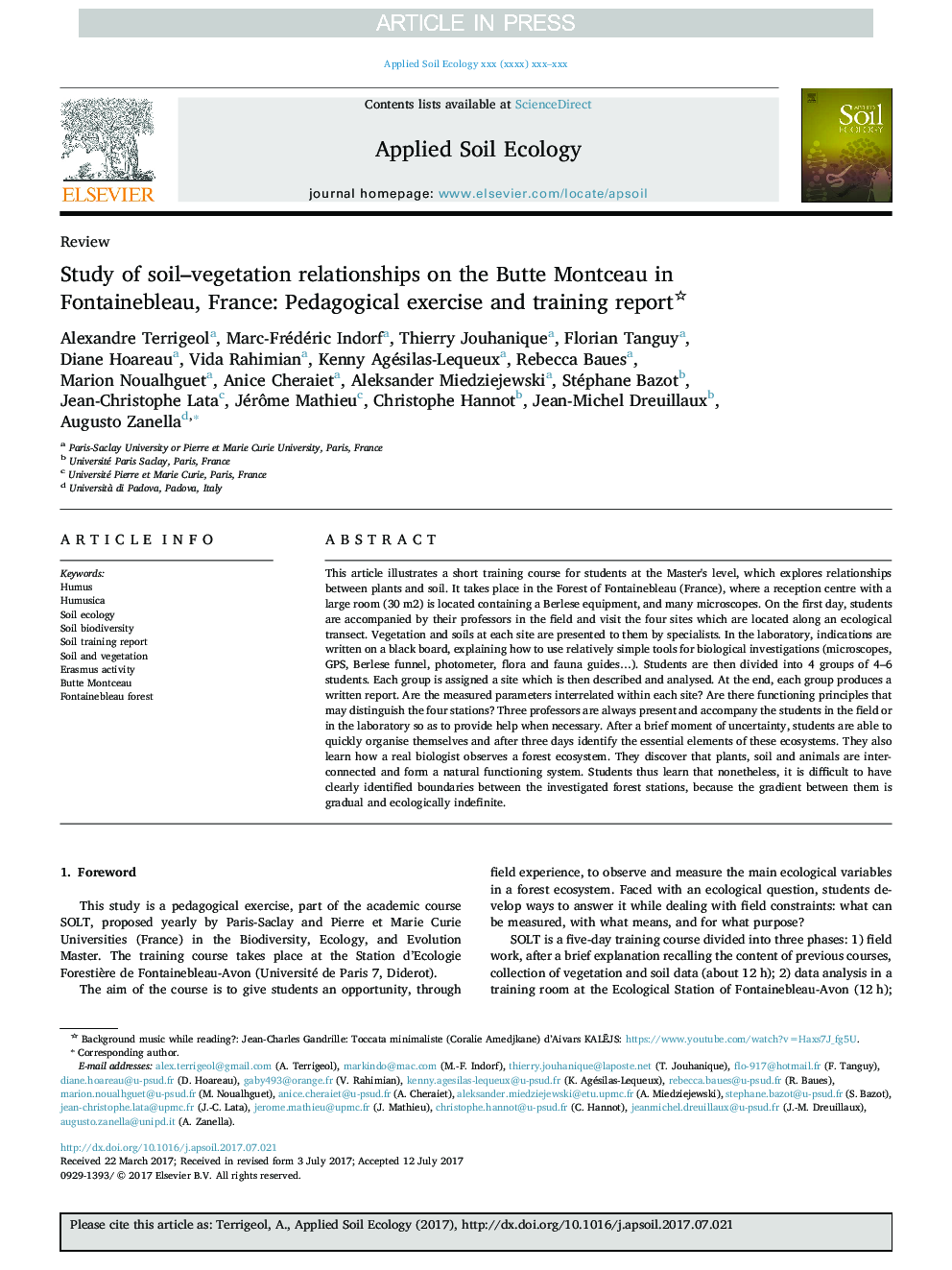| Article ID | Journal | Published Year | Pages | File Type |
|---|---|---|---|---|
| 8846892 | Applied Soil Ecology | 2018 | 13 Pages |
Abstract
This article illustrates a short training course for students at the Master's level, which explores relationships between plants and soil. It takes place in the Forest of Fontainebleau (France), where a reception centre with a large room (30 m2) is located containing a Berlese equipment, and many microscopes. On the first day, students are accompanied by their professors in the field and visit the four sites which are located along an ecological transect. Vegetation and soils at each site are presented to them by specialists. In the laboratory, indications are written on a black board, explaining how to use relatively simple tools for biological investigations (microscopes, GPS, Berlese funnel, photometer, flora and fauna guidesâ¦). Students are then divided into 4 groups of 4-6 students. Each group is assigned a site which is then described and analysed. At the end, each group produces a written report. Are the measured parameters interrelated within each site? Are there functioning principles that may distinguish the four stations? Three professors are always present and accompany the students in the field or in the laboratory so as to provide help when necessary. After a brief moment of uncertainty, students are able to quickly organise themselves and after three days identify the essential elements of these ecosystems. They also learn how a real biologist observes a forest ecosystem. They discover that plants, soil and animals are interconnected and form a natural functioning system. Students thus learn that nonetheless, it is difficult to have clearly identified boundaries between the investigated forest stations, because the gradient between them is gradual and ecologically indefinite.
Related Topics
Life Sciences
Agricultural and Biological Sciences
Ecology, Evolution, Behavior and Systematics
Authors
Alexandre Terrigeol, Marc-Frédéric Indorf, Thierry Jouhanique, Florian Tanguy, Diane Hoareau, Vida Rahimian, Kenny Agésilas-Lequeux, Rebecca Baues, Marion Noualhguet, Anice Cheraiet, Aleksander Miedziejewski, Stéphane Bazot, Jean-Christophe Lata,
